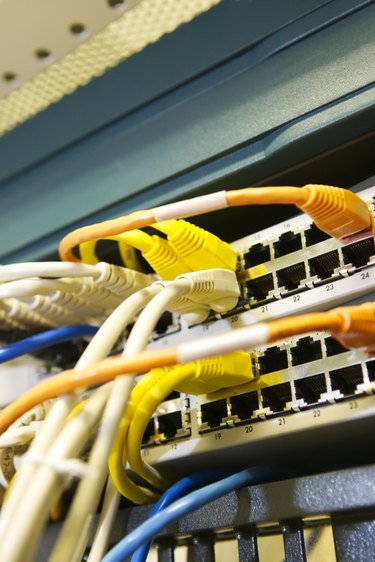
Local network hardware is comprised of routers, switches, firewalls, gateways and cabling. Network hardware typically corresponds to the various "levels" of the OSI or DOD networking model -- such as the "data link" layer for switches and the "network" layer for the router. Some networking hardware, like the wireless routers used in home networking, combine the functions of several networking layers, albeit in a limited fashion. Routed networks and switched networks have various advantages and disadvantages.
Routed Advantages
Video of the Day
Routers are most useful in networks that have multiple subnetworks and physically separated networks in different sites or campuses, as routing protocols allow heterogeneous networks to talk to each other. Routing protocols also know the best paths to other networks (including the Internet) typically without additional configuration. Routing provides the backbone for very wide networks because routers regenerate data indefinitely across networks with no degradation.
Video of the Day
Switched Advantages
Switches, unlike routers, can be unmanaged, since they support the physical connections of workstations and devices to one or more networks. This stripped down interface and functionality has two distinct advantages. Firstly, a switched network can be deployed much more cheaply and interchangeably, creating highly redundant infrastructure. Secondly, the automatically configured switching protocols can run much more quickly and efficiently, making switched networks much faster on average than routed networks.
Routed Disadvantages
Routers require skilled network managers in order to configure, deploy and manage. The more routers there are in a particular network, the more planning needs to be done. Routers are also much more expensive than switches because of this. Routers have a higher networking overhead cost because they're much more powerful than lower level networking hardware. For this reason, planning a network should include only as many routers as necessary.
Switched Disadvantages
The advantage of the superior speed and simplicity of the hardware switch is traded off for functionality. For example, unmanaged switches don't support VLAN's, which replicate some of the functions of routers for simple network management. Switches are typically completely inadequate at limiting broadcasts over a network, which can lead to inefficent use of bandwidth.